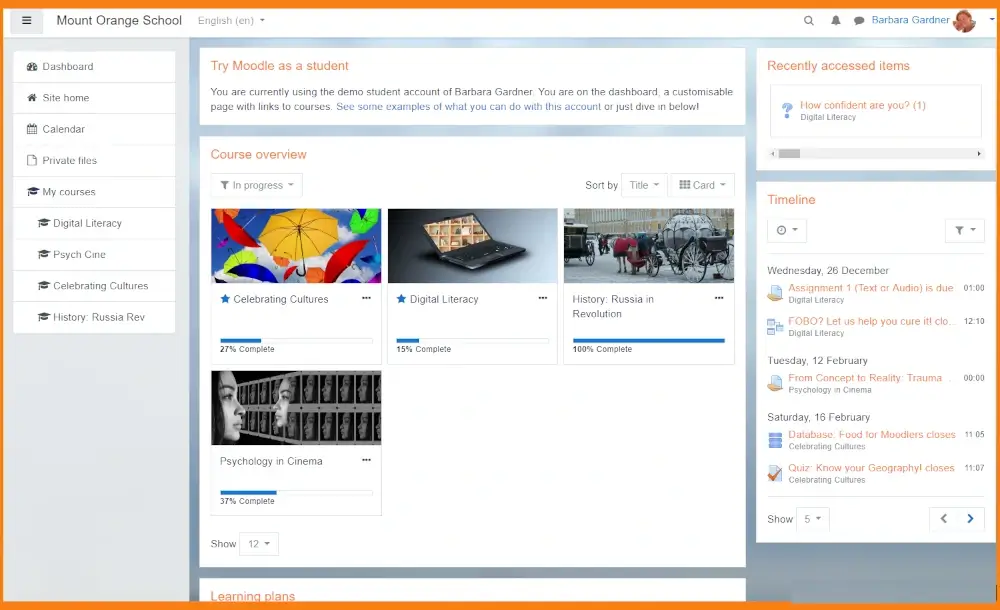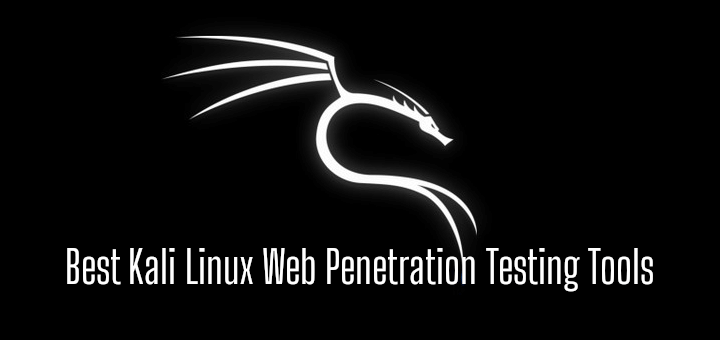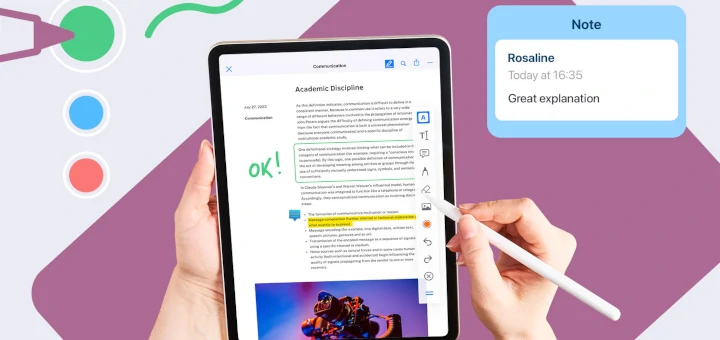The world of education, like other sectors, has been undergoing the process of digital transformation for years. With the creation of e-learning platforms, education is now available to anyone who has access to the Internet.
The term “e-learning“, which means “electronic learning“, is one of the most commonly used words today. It refers to training and education typically on the Internet.
Modern e-learning platforms or LMS (Learning Management System) are based on a virtual learning space that, in general, is oriented to simplify the distance training experience. So, due to the importance that e-learning has, it is necessary to know which are some of the best platforms available.
In this post, you will find a brief overview of 5 open-source solutions for e-learning that can be installed on a Linux machine.
1. Moodle – Open-Source Learning Platform
Moodle is one of the most widespread LMS platforms in the world, being the choice of a large number of universities and schools. Its structure is based on the constructivist learning approach.
Although Moodle may seem complicated at first sight, it’s considered an optimal LMS for collaborative learning models. The educational process can be carried out with Moodle’s own activities, such as wikis, glossaries, workshops, progress tracking, personalized dashboards, calendars, etc.
Moodle has a huge community of users, developers, and collaborators all over the world and is updated very frequently. Thus, it offers a lot of useful features, such as virtual courses and classrooms. This can be an advantage but it requires some time and effort for its initial installation and configuration.

Another advantage is that the functionality of Moodle can be significantly extended via third-party plugins. For example, you can add the BigBlueButton plugin to enable video and audio calls or activate Level up! to make the learning experience as interactive and exciting as possible.
You are even allowed to create a collaborative Moodle environment by integrating ONLYOFFICE Docs. In this case, you can share and collaborate on documents in real-time without leaving the Moodle interface.
At the same time, Moodle is not easy to administer. This is why prior training is usually necessary in order to learn how to use the platform as an admin or teacher. Despite this, Moodle can be adapted to a wide variety of educational scenarios, from large universities to small academies.
However, it is best used in higher education where you can really take advantage of all its collaborative activities, records, reports, evaluation systems, etc.
2. OpenOLAT – Infinite Learning
OpenOLAT is a web-based e-learning platform for online teaching and learning. In comparison with other LMS platforms, OpenOLAT impresses with its simple and intuitive operation and interface.
The built-in modular toolkit offers course authors a wide range of didactic possibilities. Each installed instance of OpenOLAT can be significantly extended adapting to the needs of the educational establishment. Integration into existing IT infrastructures is also possible. The OpenLat architecture is designed for minimum resource consumption, scalability and security.
OpenOLAT can be used to provide educational content, form groups, organize users, and assign users to different courses. Using the platform, learners can learn, communicate, and share knowledge. You can have all these features in one system, directly in the web browser, without having to install any additional tools.
OpenOLAT is based on the latest innovations in the fields of education and learning psychology. It is built with cutting-edge technology while maintaining its focus on the simplicity of the learning experience.
Apart from having the usual administration features (account creation and management, role assignment, server administration, course management, etc.), OpenOLAT has a great novelty compared to Moodle: the possibility of customizing the login page for each type of user. It also has an internal messaging system and a calendaring tool that is very similar (if not identical) to Google Calendar.
3. Chamilo – eLearning, and Collaboration Software
Chamilo is an open-source e-learning platform that is designed to improve access to knowledge all over the world. It is supported by the Chamilo Association and there is a global network of services providers and contributors.
Chamilo emerged in 2010 as a fork (modification) of the old Dokeos LMS. Although it uses the same web technologies as Moodle (PHP and Javascript), it is quite different in many aspects.
First of all, Chamilo includes social features (chat, messaging tools, and workgroups) in a more efficient and simpler way than Moodle. And of course, it has everything you need to run an e-learning course: forums, chat, wikis, blogs, documents, lessons, links, assignments, certificates, follow-up reports, sessions, different user profiles, etc.
The technical requirements of Chamilo are also lower than those of Moodle. And both its learning curve and its interface are more user-friendly. It makes better use of graphical elements, using icons that make the user experience more intuitive.
On the other hand, Chamilo has very few customization options and add-ons to increase its capabilities. Moreover, community support is much scarcer than in Moodle. It is not so easy to find certain references and pieces of advice in the forums to help you overcome the problems you might face.
Chamilo has no marketplace of its own but some integrations are possible. For example, the latest version comes with the preinstalled plugin for ONLYOFFICE Docs, so you can view and edit documents right within the platform. Other integration examples include Drupal and WordPress, to name a few.
Chamilo may be suitable for educational institutions and SMEs (consultancies, training departments, etc.) that prefer to have a simple open-source system that is more agile and intuitive than Moodle.
4. Open edX – Online Learning Platform
Open edX is an open-source LMS platform created as a joint initiative between Harvard University and the Massachusetts Institute of Technology (MIT). It uses the same code as edX, the popular Massive Open Online Course (MOOC) platform but stands out for its robust and flexible architecture.
This means that it has a lot of scalability potential. It can be connected to any type of application and includes its own gamification module. The platform is divided into two main parts.
On the one hand, Open Edx Studio, is designed for teachers who want to create courses for the platform, and on the other hand, the Open Edx LMS, the learning management system, focuses on the students who virtually attend the courses.
The content that can be integrated into a course is multimedia and supports various formats, such as books or videos, adapted to the needs of the learning process. In addition, it has social network integration, and discussion forums, where both students and teachers can participate.
It allows teachers to communicate with students and students to keep track of their progress in the course.
Open edX is mainly used in university environments. Moreover, due to its flexibility and its competence management model, it is also adopted by large companies such as IBM.
5. SWAD – A Web Platform for Education
SWAD (Shared Workspace At a Distance) is a free e-learning management system and virtual learning environment for managing the subjects, students, and teachers of one or more educational institutions. It was developed at the University of Granada (UGR) in 1999, and since 2012 it has been used in other universities.
In a nutshell, SWAD is an educational platform that allows teachers to create workspaces for their subjects and from there create content, store documents, manage students, and communicate with them or set up interactive tests.
As a web tool, SWAD comes with various features to make the learning process more efficient. It offers tools for data management and allows students and teachers to exchange content. There are also social networks, discussion forums, assignments, and interactive tests for self-assessment. Some of the main features are also available on the Android app.
SWAD is a comprehensive tool that can be an important complement to the learning experience in the classroom, with a very low implementation cost even in large educational institutions.
Do you know any other e-learning or LSM platform for Linux or have experience in using one of the solutions described above? Let us know by leaving a comment below.







